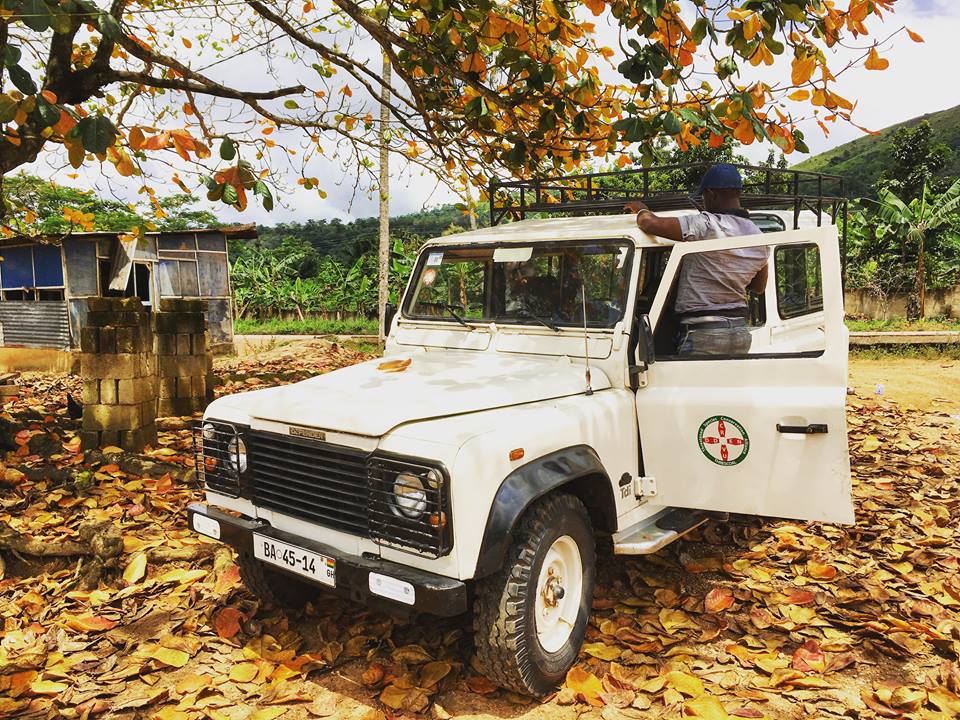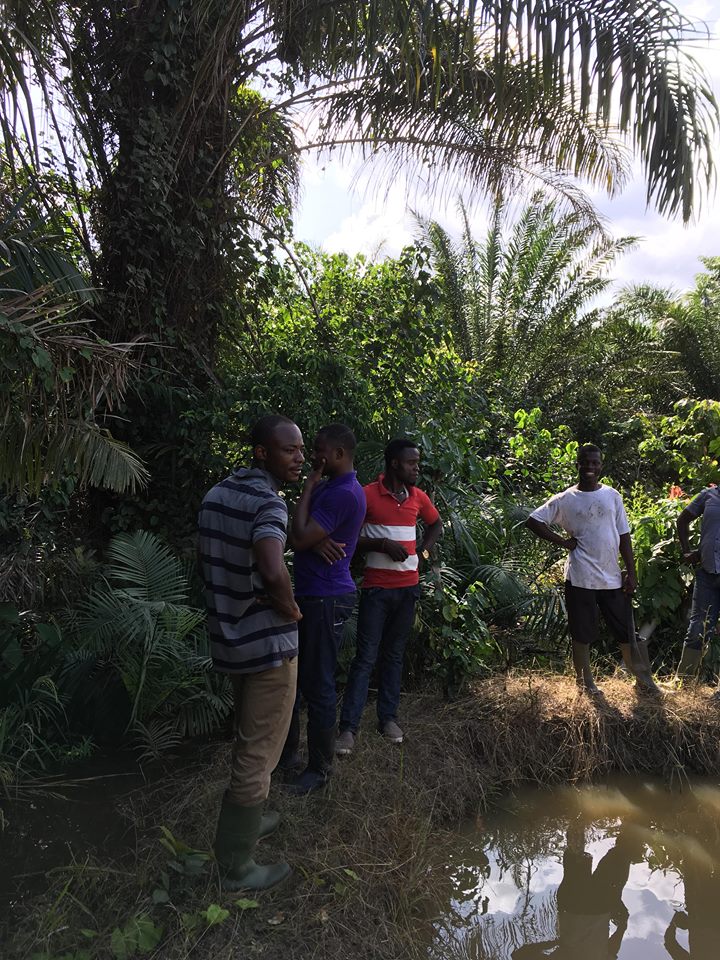The morning had been a blur of breakfast, last minute packing and passport checks, so it wasn’t until my tube finally trundled into Heathrow Terminal 3 that the excitement began to set in. Here I am, boarding my flight to Ghana, on my way to catch some bloomin’ crocodiles!
However, the trip of a lifetime was not just an adrenaline-fuelled adventure into the unknown for a crazy herpetologist. The reptiles of West Africa are in dire straits, with many species of tortoise and all three species of crocodile on the decline. I was visiting Ghana to help shape the project being undertaken by Segré EDGE Fellow Emmanuel Amoah. Emmanuel is the first ever EDGE Fellow to be working on a crocodile and, along with Aurelie and her Round Island keel-scaled boa project, one of the first Fellows to ever focus on an EDGE reptile.
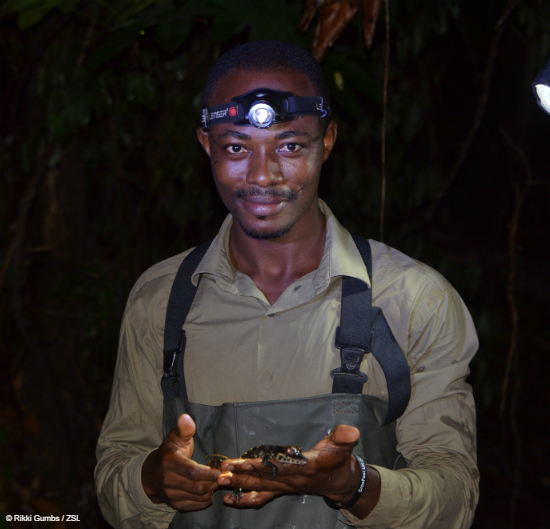
After a short hop over the Sahara Desert, we touched down in Accra. I emerged into the Ghanaian night and was greeted first by the wall of heat and humidity. Next I was greeted by Emmanuel, who had made the 6-hour bus journey to meet me at the airport. We jumped into a taxi and headed to the bus station to make the 6-hour return journey to Kumasi, where Emmanuel is based.
The overnight journey to Kumasi gave me the chance to get up to speed on Emmanuel’s project and the state of crocodile conservation in the region. Emmanuel’s EDGE species, the West African slender-snouted crocodile, is a unique, elusive and poorly-known crocodilian. The species has a long, slender snout (hence the name!), which is perfectly adapted for capturing fish—the main source of food for the crocodiles. The West African slender-snouted crocodile is a very shy species and is under immense threat from human disturbance, hunting, habitat degradation and fragmentation across its entire range. Therefore, the species is currently listed as Critically Endangered by the IUCN Red List, but this tells only half of the story.
The species is listed as Critically Endangered when considering its status across its whole range, from The Gambia in the west to Tanzania in the east. However, recent research led by Dr Matt Shirley—one of Emmanuel’s collaborators on the project—has revealed the West African populations of slender-snouted crocodile to be distinct from the Central African populations. Consequently, the West African slender-snouted crocodile is now considered a distinct species awaiting formal description. This split of the two species means both are much more restricted than originally thought, and actually face a considerably greater risk of extinction than we previously realised.
Not good.
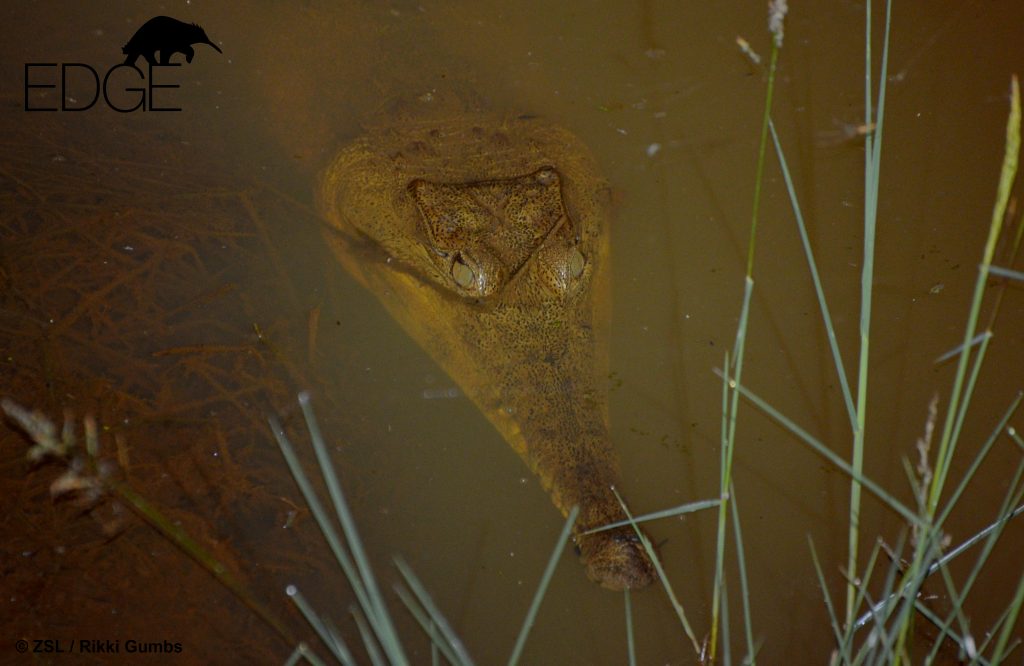
After a day of acclimatising in Kumasi, we met up with Emmanuel’s team of crocodile conservationists (or ‘the Croc Squad’ as I liked to think of us) and made our way to Emmanuel’s first field site in Obuasi. The area was originally brought to Emmanuel’s attention due to the unusually high number of encounters between local fishermen and crocodiles. The water levels rise significantly in the rainy season, and crocodiles have been found in commercial fish ponds close to the river and even in the front yard of a local villager. Sadly for the crocodiles, they are a fantastic source of protein and do not tend to survive these encounters. One aspect of Emmanuel’s project is to study the movement patterns of crocodiles in the region and work with the local fishermen to try to limit these deadly (for the crocodiles) interactions.
The Jimi River runs through the region, and we were to survey several stretches of the river for crocodiles. Ahead of our first night survey, where we would walk alongside—or inside—the river using high-powered torches to search for the tell-tale eyeshine of a crocodile, we walked the route during the day to create a path for the night ahead. As the crocodiles are very shy, particularly in the day, we did not expect to see any individuals during our daytime walk. Indeed, I was too busy rummaging under bushes and logs, searching for my other favourite reptiles: snakes. So it came as a great shock when Emmanuel called over, “crocodile! Here!”
I pulled myself from under a pile of palm leaves and ran to where Emmanuel was pointing into the river. Sure enough, just five metres in front of us, was a juvenile slender-snouted crocodile which we estimated to be only one year old. The crocodile floated along in the current with its eyes and snout above the water, and seemed completely unperturbed by our presence. Not so shy after all! Or so I thought…
Our first two nights in Obuasi were complete washouts. Momentous storms hit both nights, around one hour before we were due to start our surveys, and lasted long into the night. However, all was not lost. We were able to map sections of the river during the day for Emmanuel to survey in the future, and we were able to trial Emmanuel’s new high-tech equipment I had brought from the UK (waders). Despite managing to squeeze in a night survey on our final night, the juvenile we saw on the first day turned out to be the only individual we spotted in Obuasi. It was a disappointment, but given the hunting pressure experienced by crocodiles across West Africa, it came as no surprise.
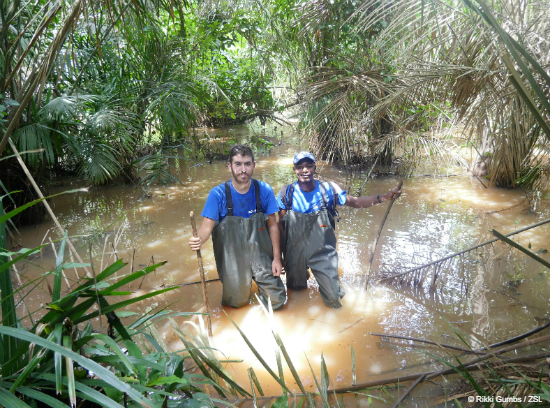
Our next stop was Emmanuel’s second field site. Though only a few hours from Obuasi by car, the cultural beliefs in the new site are a world apart. Locals abide by traditional beliefs which dictate that they must not hunt for food from the river. Thus, the crocodiles and their main food source, fish, have not been subjected to the intense persecution experienced elsewhere in the region. Despite their beliefs, the locals still use the river to wash clothes and deposit waste, particularly plastics. In fact, at one point during a nocturnal survey I realised we were walking across the river on a raft of plastic debris!
I was intrigued to discover how the lack of hunting had affected the behaviour and abundance of crocodiles in the second field site. Yet I did not have high expectations for many sightings once I witnessed the levels of plastic and other waste discarded into the river. So, I was bowled over by the number of crocodiles we encountered during our two nights at the second site. Not only did adult crocodiles appear to be much more abundant here than Obuasi, but also they were not at all shy. We were able to approach within three metres of adult crocodiles to capture some of the only images of adult West African slender-snouted crocodiles in existence.
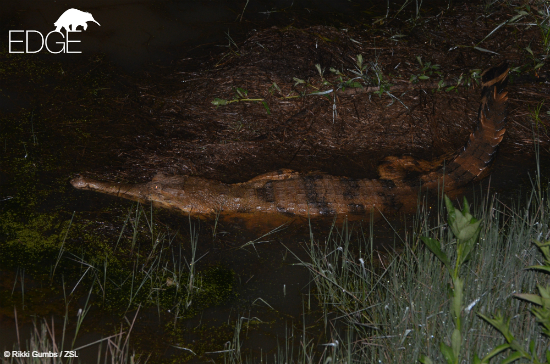
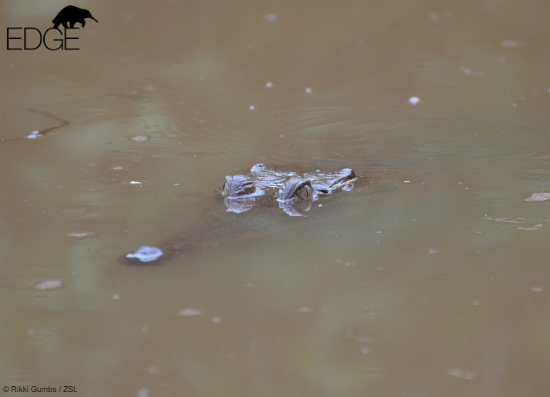
Emmanuel plans to work with the locals here to protect the crocodiles and their habitat, and explore the impact of the traditional beliefs on the ecology and behaviour of the crocodiles in the region. Though the outlook for the West African slender-snouted crocodile looks bleak across most of its range, the discovery of populations outside protected areas that are currently free from persecution and hunting is an encouraging sign. Maybe there is still a future for crocodiles in West Africa.
